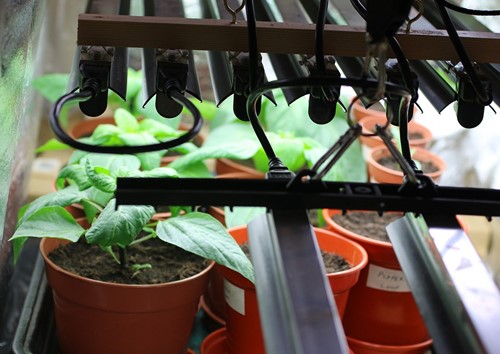
Whether you’re growing microgreens or an herb garden, having an indoor grow light setup can take your efforts to the next level. With that move, your plants can get all they need to thrive and provide bountiful harvests. There are a few requirements for this type of project, however.
You need the right bulbs, placement and runtimes to achieve your goals. To help you get started, here’s a quick guide to setting up indoor grow lights.
To best mimic the power of sunlight for your indoor plants, you need to select full-spectrum bulbs. Like the rays coming from the sun, these bulbs generate all the colors of the rainbow for the perfect cool-warm light balance. With that, they work well from the germination through fruiting stages, so you don’t have to switch out your grow lights halfway through.
You can choose either fluorescent, LED or high-intensity LED lights to give your plants the full spectrum of light. Fluorescent bulbs will generate a bit of heat to help your seedlings sprout but cost much more to run than LEDs. Pairing LEDs with a heat mat can mimic that effect without using up excess energy.
When using indoor grow lights, you need to set the fixture at the perfect height. For most plants, 12- to 24-inches from their canopy is a great place to start. You can then adjust the position as you monitor your plants’ growth.
If they are looking too leggy, you’ll want to lower the light a few inches to keep them from reaching ever upward. Lights that are too close to the plants can cause them to spread outward as they grow or even damage their leaves.
Plants grow best when kept on a strict daytime/nighttime schedule. At the seedling through vegetation stage of growth, they need the indoor grow lights for about 12 hours a day. Once they begin to flower, you can turn up the lights for around 16 to 18 hours a day.
You should never have the lights on for 24 hours a day as that can disrupt the growth of your plants. They need the off hours to rest and cycle nutrients up from the roots and through their systems. If you think you may forget to turn the lights on and off, put them on an automatic timer set to your ideal preferences.
Experiment with the placement and timing of the lights to see what each plant prefers. You can even switch light types if you’re not satisfied with the results or just want to gauge the difference.
As you do, jot down data on their growth speed and harvest size to determine what works best. Remember to note any changes you made to their watering and fertilizer schedule as well to control the other variables.
Over time, you’ll find the perfect formula for every type of indoor plant you like to grow. Then, you can branch out by adding other types of flowers, veggies and fruits to the mix and expand your indoor garden by leaps and bounds.
